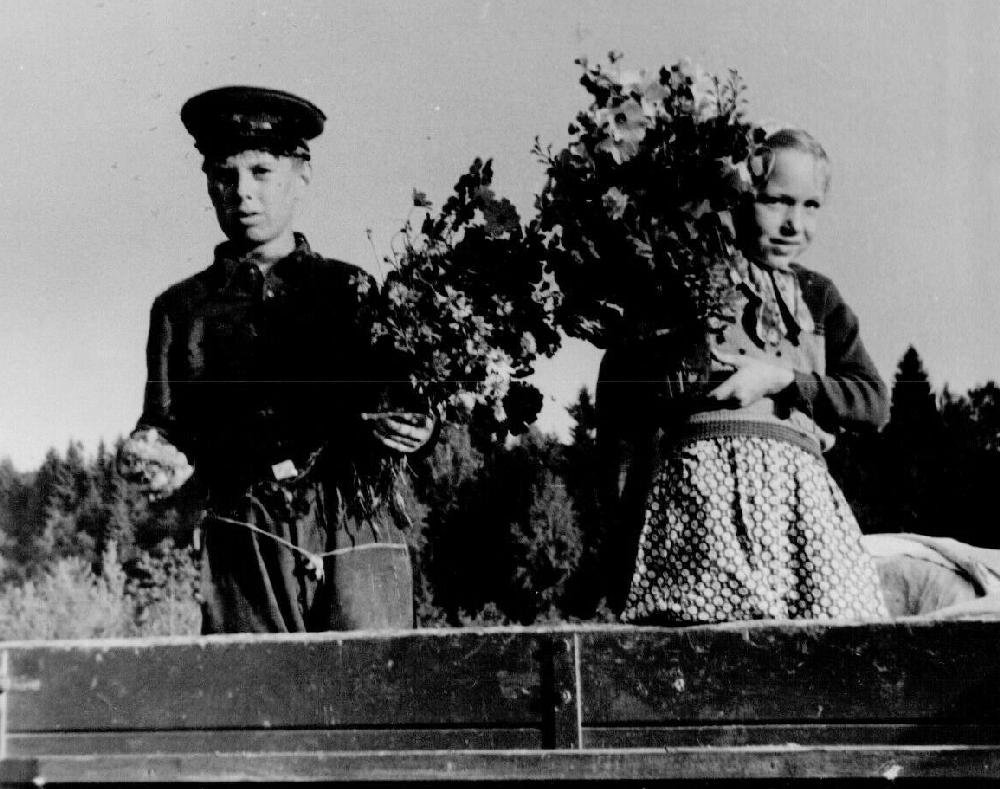
Soviet Collective Farms: Reform Efforts (1960s-80s)

Figure 1.--Here we see two children on an unidentified Soviet collective in 1958. They seem to be involved in some sort of celebration. One aspect of Soviet collectivization was that Soviet Law mandated that farm workers could not leave and seek city jobs. They were tied to the land like Tsarist serfs. Workers had to obtain Government permission to leave the collective farm. This Law not only applied to the adults, but their children inherited that status. We are not sure just when this law was changed, we think not until the 1980s, but have not yet found the date.
|
|
One might have thought that numbers like those produced from the family garden plots would have caused Soviet leaders to reassess their thinking and reconsider Marxist orthodoxy. The family plots were basically 10 times more productive than the collective farm output. Despite the numbers, there was no backing away from the collective farms. Communist ideology trumped economic fact. And there is every reason to think that the officila numbers downplayed the productivity of the family plots. Anyone suggesting a shift to private property was putting himself in the crosshairs of the NKVD and could be either shot or sent off to the Gulag. And the primacy of ideology did not change after Stalin's death (1953). With Kkruschev's De-Stalinizarion campaign (1956), the NKVD became the KGB and the level of frepression eased. The Terror came to an end amd the Gulag began to be disasemlbed, but there was no relaxation of Marxist orthodoxy. And collective wirkers continued to be tied to the land like Tsarist serfs. And their children inheritedvthis status. Kkruschev did not believe in terror and mass murder. He did absolutely believe in Communism. There would be no Deng Xaoping in the Soviet Union to introduce market reforms (private ownership and capitalism). Which is why the Soviet Union no longer exists today and China prospers. This is not to say that there were not efforts at reforms. There was a major effort to bring marginal land into production, especially in Central Area. The result was masive enviriomental damage. Many reformn programs were announced. They tinkered around the edges with the vconviction that collectivization was correct basis for Soviet agriculture. None of the reforms included privitaztion and market reforms. Nor were even intermediate steps considered.. there was no attempt to address weak worker incentives and managerial autonomy. Gorbechev considered someof the most significant reforms, but still did not get to the heart of the problem late 1980s). This would only come slowly after the implosion of the Soviet Union (1991).
CIH

Navigate the Children in History Website:
[Return to Soviet collective farms]
[Return to Main Stalinist assault on the peasantry page]
[Return to Main Great Patriotic War page]
[Return to Main Soviet school page]
[About Us]
[Introduction]
[Biographies]
[Chronology]
[Clothing]
[Disease and Health]
[Economics]
[Environmental issues]
[Geography]
[History]
[Human Nature]
[Law]
[Nationalism]
[Presidents]
[Religion]
[Royalty]
[Science]
[Social Class]
[Bibliographies]
[Contributions]
[FAQs]
[Glossaries]
[Images]
[Links]
[Registration]
[Tools]
[Children in History Home]
Created: 2:10 AM 10/17/2019
Last updated: 2:10 AM 10/17/2019



